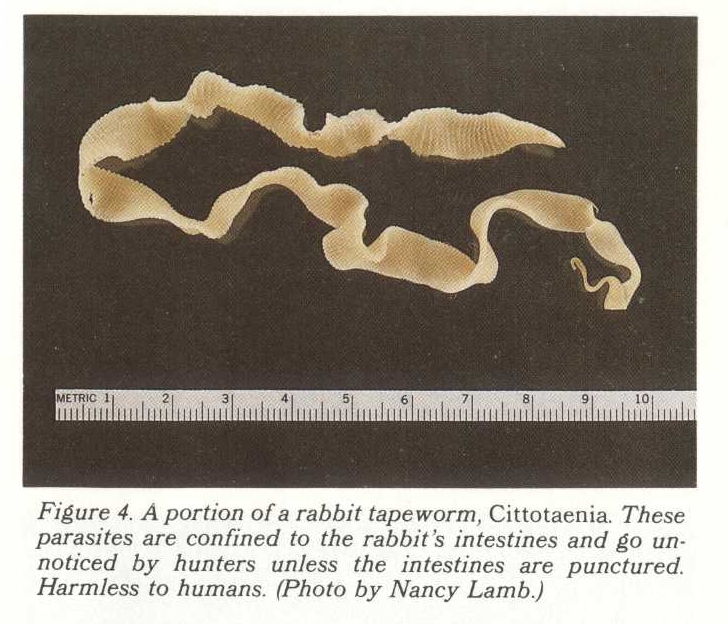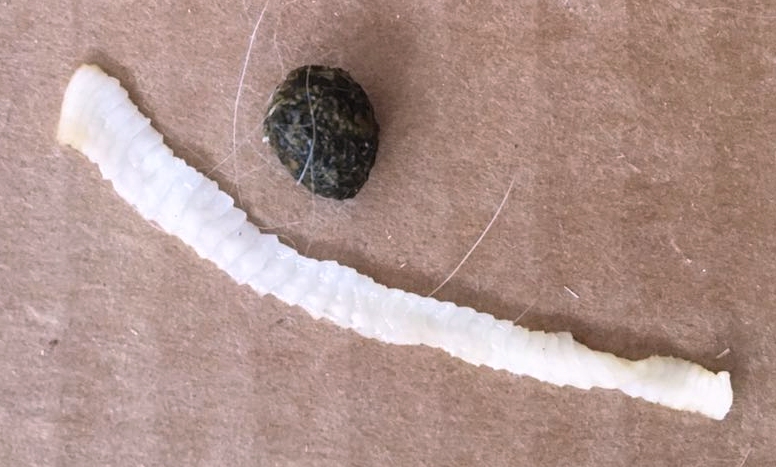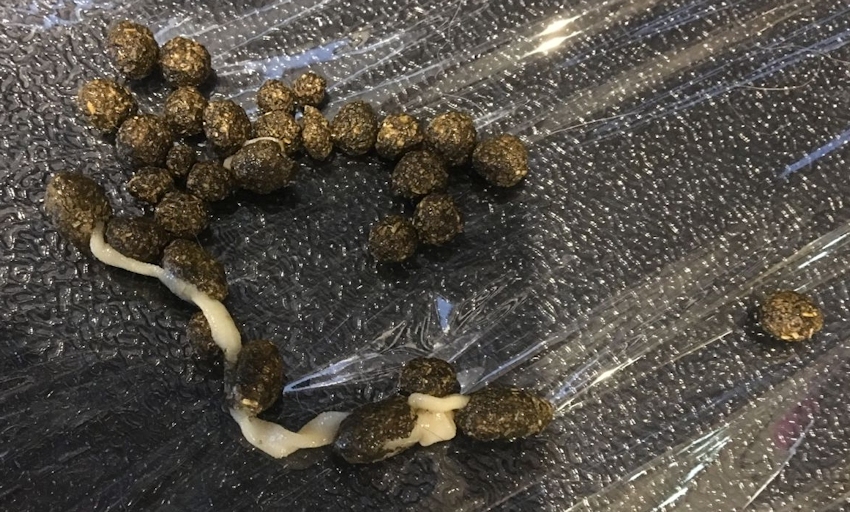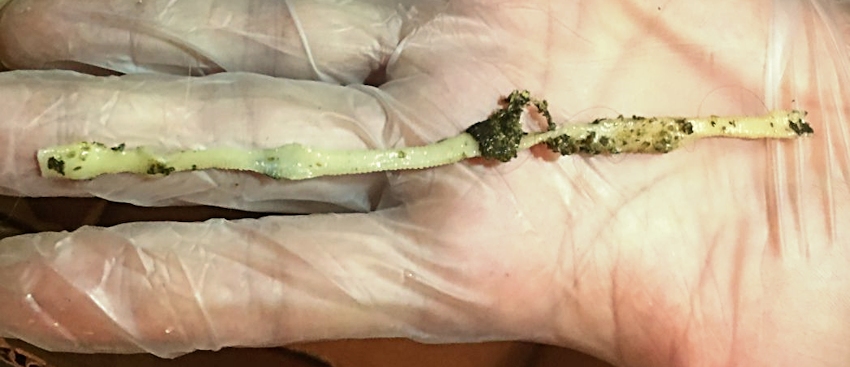Tapeworms:
rabbit as the definitive host
Esther van Praag,
Ph.D.
|
MediRabbit.com is
funded solely by the generosity of donors. Every
donation, no matter what the size, is appreciated and will aid in the
continuing research of medical care and health of rabbits. Thank you |
Warning: this
file contains pictures that may be distressing for some persons.
|
Cestodes Several species of flat segmented worms, or
tapeworms, can infest wild or domestic rabbits and wild lagomorph species
like the American cottontail rabbit or hares, and develop into mature
reproducing tapeworms. They include: ˇ Monoecocestus americanus, the porcupine
tapeworm; ˇ Ctenotaenia ctenoides; ˇ Cittotaenia variabilis, the rabbit
tapeworm; ˇ
Mosgovoyia pectinata americana or M. perplexa; Tapeworm infestation is rare in pet rabbits, and
essentially caused by Cittotaenia variabilis. The life cycle of these worms is not well understood
to these days. It is believed that infected arthropods like oribatid mites (mites living in the soil) transmit the
rabbit tapeworm Cittotaenia variabilis. The rabbit ingest the mites while grazing
or eating contaminated hay. The larval form will develop in the abdomen and
the liver. Adult stages are found in the intestine. It measures up to 1 cm
wide, and can reach as long as 20 cm. Cittotaenia variabilis is characterized by a scolex
(head) with 4 suckers that will attach to the intestinal wall.
Clinical signs
If the number of tapeworm is small, no clinical
signs are observed. In case of severe infection, there may be signs of,
diarrhea, bloat, ileus, and severe pain. The rabbit may grow slowly; appear
abnormally thin, in spite of a normal appetite. Proglottis (reproductive
segments) can be found among the feces:
Portion of a flat worm - possibly Cittotaenia variabilis,
found among the fecal dropping of a pet rabbit.
This rabbit is fed fresh dandelion and
broadleaf plantain from the field, where wild contontails
can be observed. Picture : Wei in Massachusets (USA)
Rarely, the worm can be found to stick out of the
anus. Upon necropsy, ulceration may be is observed at the
attachment site of the worm onto the intestinal wall. The tapeworms affecting rabbits are not zoonotic and
can therefore not be transmitted to humans after contact with contaminated
fecal material or proglottis. Treatment
to
understand the meaning of the abbreviations, click here.
The rest of the tapeworm has been expelled after treatment with praziquantel
Fecal material and mucus surround the
expelled worm. Picture: Wei
Good sanitation
of the living environment of the rabbit is also necessary. Acknowlegement
Many thanks to Wei in Massachusetts (USA) for sharing this rare
finding in her rabbit Bunbun and her permission to
use the pictures.
Further information:
Manning
et al. The biology of the laboratory rabbit. 2nd ed. London, UK,
1994. Sadler
KC. Common diseases and Parasites of Cottontails, Missouri Dept. of
Conservation. Pinto
RM, et al. Helminths of rabbits (Lagomorpha, Leporidae) deposited in the Helminthological Collection
of the Oswaldo Cruz Institute. Rev. Bras. Zool. 2004, v. 21, n. 3, pp. 599-604. Soltysiak Z,
Bednarski M, Piekarska J. Wagrzyca watroby królika. Medycyna Wet.
2007, 63:1255-1257. |
e-mail: info@medirabbit.com







